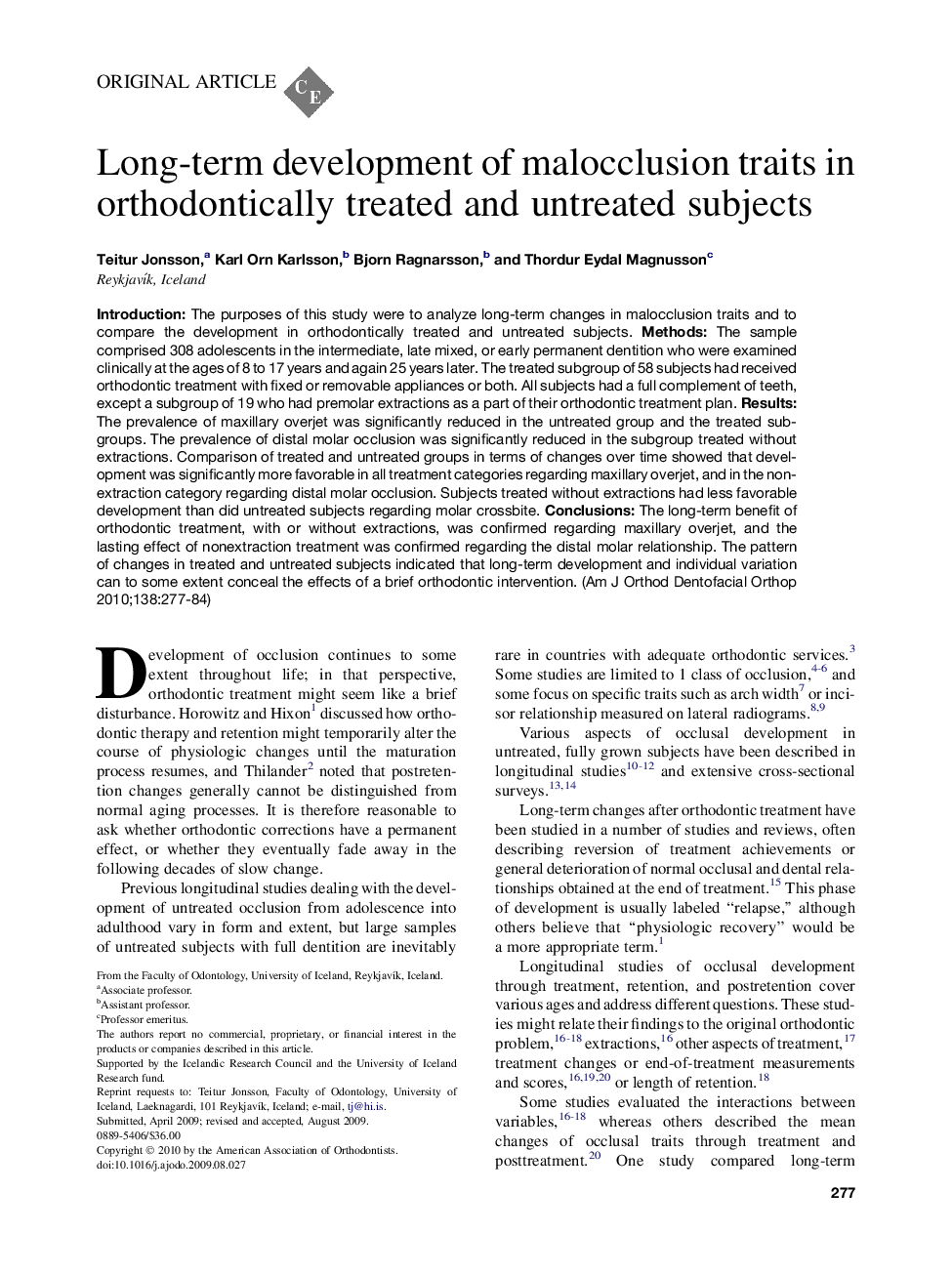| Article ID | Journal | Published Year | Pages | File Type |
|---|---|---|---|---|
| 3117565 | American Journal of Orthodontics and Dentofacial Orthopedics | 2010 | 8 Pages |
IntroductionThe purposes of this study were to analyze long-term changes in malocclusion traits and to compare the development in orthodontically treated and untreated subjects.MethodsThe sample comprised 308 adolescents in the intermediate, late mixed, or early permanent dentition who were examined clinically at the ages of 8 to 17 years and again 25 years later. The treated subgroup of 58 subjects had received orthodontic treatment with fixed or removable appliances or both. All subjects had a full complement of teeth, except a subgroup of 19 who had premolar extractions as a part of their orthodontic treatment plan.ResultsThe prevalence of maxillary overjet was significantly reduced in the untreated group and the treated subgroups. The prevalence of distal molar occlusion was significantly reduced in the subgroup treated without extractions. Comparison of treated and untreated groups in terms of changes over time showed that development was significantly more favorable in all treatment categories regarding maxillary overjet, and in the nonextraction category regarding distal molar occlusion. Subjects treated without extractions had less favorable development than did untreated subjects regarding molar crossbite.ConclusionsThe long-term benefit of orthodontic treatment, with or without extractions, was confirmed regarding maxillary overjet, and the lasting effect of nonextraction treatment was confirmed regarding the distal molar relationship. The pattern of changes in treated and untreated subjects indicated that long-term development and individual variation can to some extent conceal the effects of a brief orthodontic intervention.
